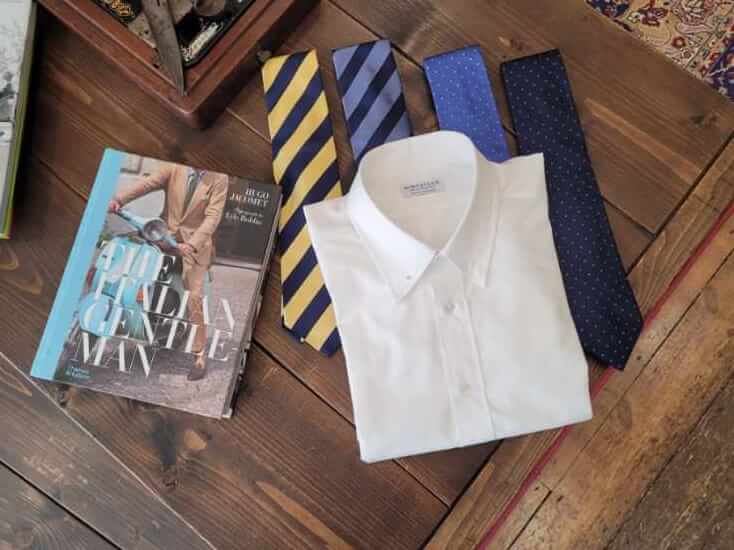
The Most Common Shirt fabrics and What Distinguishes Them
Share
Knowing which fabric to choose for your shirt can be like choosing a sweet in a candy shop, often there are too many options and too little knowledge of what the differences between them are.
Here we will look at the six most common fabrics used constructed from Cotton in men’s shirting and what discerns them from each other in terms of their weave and composition.
First, let’s make clear on some of the terminology used when discussing shirting materials first. Fabric, or cloth (or material) are constructed using different fibres (Cotton, Linen, Wool etc) and varying weaves (plain weave, basket weave, Twill weave) Which sometimes, but not always denotes the end product, ie. The name of the fabric. The weave of the fabric is the pattern & composition of which the warp and weft are woven together in. Warp threads run vertically; weft threads run horizontally. Weft threads are woven over and under the warp threads to create the fabric’s pattern and texture.
Poplin
Starting with perhaps the most widely known and widely used - Poplin. Constructed using a plain weave, where fine warp and thicker weft threads are closely woven in a simple over and under pattern. With twice as many warp threads, this weave produces a smooth, crisp and flat textured fabric. It has a particularly sharp finish that lends well to creating sharp stripes and checks. It can be constructed in different weighted threads (or yarns) which determines the end density and quality. The lack of texture and smooth finish makes it perfect for formal shirting, it will keep you cool without being classed as a summer shirt. It can be prone to wrinkling and will need to be ironed well to maintain its crisp look.
End on End
Constructed using the same weave as Poplin but with alternating colours in the warp yarns which gives a heathered and textured look to the end product when viewed up close. From a distance it appears as a solid colour. Lightweight and crisp to the hand like Poplin, it is perfect for warmer month and formal occasions alike.
Oxford
Historically the Oxford Shirt was created for Polo players at top London universities in the 1900s and fashioned with a button-down collar so that movement of an open collar didn’t distract but offered formality when playing the field. Now a very popular weave, it is of a much more robust construction than Poplin and has a more durable finish. Created using a symmetrical basket weave where two coloured warp threads woven across a thicker white weft, it uses heavier threads (or yarns) but a looser weave which makes for a much more durable fabric. Suited better to the cooler and colder months, it is typically a semi-formal option for shirting, however with a little tweaking on design ie. collar and cut; it can easily be utilised for everyday office wear, though perhaps not for formal occasions.
Pinpoint
A variation on the Oxford weave, it is a crossover between Poplin and Oxford. Constructed using a two over two under weft in a similar fashion to Oxford, using finer yarns and a tighter weave like Poplin. It is a more formal shirting fabric than Oxford and due to the alternating weft yarns it creates a slightly dotted effect on the overall appearance of the fabric when viewed up close. It makes for a wonderfully versatile shirting fabric, perfect for a little variation in one’s collection.
Twill
A much denser and tighter weave it is constructed in a diagonal fashion and can be made using different compositions such as a 2x2, 4x4 or 3x1. These varying compositions determine the lustre and drape of the material, heavier versions are used in military wear and to construct Denim, lighter versions make for perfect shirting fabrics. Compared to Poplin Twill has a nicer drape, it is a sturdy yet soft fabric, is thicker but will not give the sharp crisp finish to patterns like poplin will. It makes for a lovely crossover option, perfect for semi formal occasions and cooler climates or seasons.
Herringbone
A variation on the Twill Weave, it has the same properties, but a different pattern is used which creates the zig zag effect as is commonly associated with the name. Speaking of name, it is a pattern that is used not only in shirting but in Brickwork and tiling and is said to have originated in Roman times when they used it to construct roadways. In Shirting fabric, it has a slight sheen to it, is off a medium weight and so again makes for a perfect crossover fabric for formal and informal occasions.
